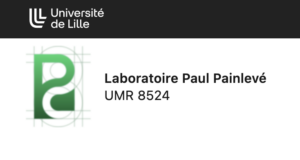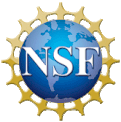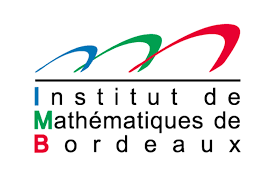Scientific Committee
Comité scientifique
Alexandru Aleman (Lund University)
Kevin Beanland (Washington & Lee University)
Catherine Bénéteau (University of South Florida)
Alan Sola (Stockholm University)
Dan Timotin (The Romanian Academy)
Organizing Committee
Comité d’organisation
Emmanuel Fricain (Université de Lille)
Stephan Ramon Garcia (Pomona College)
Pamela Gorkin (Bucknell University)
Andreas Hartmann (Université de Bordeaux)
Javad Mashreghi (Université Laval)
The conference will also be an opportunity to celebrate the 60’s birthday of William T. Ross, who is one of the leading figures in the study of- analytic function spaces, the operators acting on them and their applications.

The interaction between analytic function spaces and operator theory finds its root in the pioneering work of Beurling, who introduced the Hardy space H2, an analytic representation of ℓ2, in order to characterize the lattice of invariant subspaces of the translation operator. This gives rise to model spaces KΘ = H2 ΘH2, inner functions and outer functions. After his work, a whole theory developed focusing on classical operators on H2, such as multiplication operators (like the shift operator) and their cousins, the Toeplitz (e.g. the backward shift) and Hankel operators, composition operator, embedding operators, etc. Another important set of problems in spaces of analytic functions concerns the geometry of reproducing kernels (interpolation, sampling, uniqueness, zeros, etc.) All of these topics find their natural counterparts in spaces like Fock, Bergman and Dirichlet spaces that have attracted much attention in recent decades unveiling surprising properties (e.g. Bergman spaces appear as reachable spaces in control problems). The aforementioned model spaces are generalizations of de Branges spaces of entire functions, which are closely related to applications since they appear naturally in connection with Sturm-Liouville- equations. In particular, we mention the Paley-Wiener space corresponding to a Sturm-Liouville equation with vanishing potential and which is a special case of model spaces. It is well known that this space plays a key role in signal theory as well as also in control theory. Model spaces themselves generalize in a natural way to de Branges-Rovnyak spaces, which have also attracted much attention in recent decades and for which many challenging problems are open. The rich structure of these spaces has been studied for more than a century by the most eminent mathematicians, and continue to develop as demonstrated for instance by recent advances in connection with the so-called complete Pick property (in particular, we note the result by Hartz on the column-row property and its application to extreme points in de Branges-Rovnyak spaces in the ball (Acta Math. 2022). The applications of spaces of analytic functions in fields as vast as engineering, control theory, signal theory, communication theory or even quantum physics,… make them objects of primary importance.
The aim of this conference is focused on recent progress on Hilbert and Banach spaces of holomorphic functions and the operators acting on them. This meeting is a continuation of a series of conferences organized in recent years in Canada and France: Centre de Recherche de Mathématiques at Montreal CRM (2008), at Fields Institute (2011), CRM (2011) and CRM (2013), CIRM (2019 and 2021), thematic semester at Fields Institute (2022).
Les interactions entre la théorie des espaces de fonctions analytiques et la théorie des opérateurs trouvent ses racines dans le travail pionnier de Beurling qui a introduit l’espace de Hardy H2, une représentation analytique de ℓ2, afin de caractériser le treillis des sous-espaces invariants pour l’opérateur de translation. Ceci a donné lieu à l’espace modèle KΘ = H2 ΘH2, aux fonctions intérieures et aux fonctions extérieures.
Après ce travail de Beurling, une théorie entière s’est développée autour des opérateurs classiques sur l’espace H2, tels que les opérateurs de multiplication (dont l’opérateur de décalage à droite est un exemple) et leurs cousins, les opérateurs de Toeplitz (comme par exemple l’opérateur de décalage à gauche) et de Hankel, les opérateurs de composition, les opérateurs de plongements,… Un important champ de recherche sur les espaces de fonctions analytiques concerne également la géométrie des noyaux reproduisants (interpolation, échantillonnage, suites d’unicité, suites de zéros,…). Tous ces sujets trouvent leur analogue naturel dans d’autres espaces de fonctions analytiques, tels que l’espace de Fock, l’espace de Bergman et l’espace de Dirichlet qui ont attiré beaucoup d’attention dans les dernières décennies, en révélant des propriétés parfois surprenantes (par exemple, les espaces de Bergman apparaissent comme les espaces atteignables dans certains problèmes de théorie du contrôle).
Les espaces modèles mentionnés ci-dessus sont des généralisations des espaces de de Branges de fonctions entières, qui sont étroitement reliés aux applications puisqu’ils apparaissent naturellement connectés aux équations de Sturm–Liouville. En particulier, mentionnons l’espace de Paley–Wiener correspondant à une équation de Sturm–Liouville avec un potentiel qui s’annule et qui est un cas particulier d’espaces modèles. Il est bien connu que cet espace joue un rôle clé aussi bien en théorie du signal qu’en théorie du contrôle. Les espaces modèles eux-même se généralisent d’une manière naturelle en donnant naissance aux espaces de de Branges–Rovnyak, qui ont attiré beaucoup d’intérêt ces dernières décennies et pour lesquels de nombreux problèmes difficiles demeurent ouverts. La riche structure de tous ces espaces a été étudiée depuis plus d’un siècle par les plus grand(e)s mathématicien(ne)s et continue de se développer comme le démontre par exemple les récentes avancées en lien avec la propriété de Pick–Nevanlinna complète (en particulier, notons le résultat de M. Hartz sur la propriété ”colonne-ligne” et ses applications aux points extrêmes dans les espaces de de Branges–Rovnyak de la boule (Acta Math. 2022)). Les applications des espaces de fonctions analytiques à des champs tels que l’ingénierie, la théorie du contrôle, la théorie du signal, la théorie de la communication et même la physique quantique,… font d’eux des objets d’une importance capitale.
Cette conférence est centrée autour des progrès récents concernant les espaces de Hilbert et de Banach de fonctions analytiques et des opérateurs agissant sur ces espaces. Cette rencontre s’inscrit dans le prolongement d’une série de conférences organisées ces dernières années au Canada et en France : Centre de Recherche de Mathématiques à Montreal CRM (2008, 2011, 2013), à l’Institut Fields (2011 et 2022), CIRM (2019 et 2021).
SPEAKERS
Palak Arora (Williams College) An Optimal Approximation Problem for Noncommutative Polynomials and Rational Functions
Catalin Badea (Université de Lille) Positivity Conditions, Distances, and Multiplier Inequalities in Reproducing Kernel Hilbert Spaces
Frédéric Bayart (Université Clermont Auvergne) On the commutant of composition operators acting on the Hardy space of Dirichlet series
Kelly Bickel (Bucknell University) Multivariate Bounded Rational Functions
Alexander Borichev (Aix-Marseille Université) Complete and minimal systems of reproducing kernels in the Fock space with different densities
Cristina Camara (University of Lisbon) Paired operators and scalar-type kernels of block Toeplitz operators
Isabelle Chalendar (Université Gustave Eiffel) Linear isometries on the Fr´echet space of holomorphic functions on the open unit disc and the annulus
Raymond Cheng (Old Dominion University) An overview of the p A spaces
Michel Crouzeix (Université de Rennes) Some questions around a conjecture
Eva Gallardo-Gutierrez (Complutense University of Madrid) Compact perturbations of normal operators: spectral idempotents and decomposability
Sophie Grivaux (Université de Lille) Some recent results on generic properties of contractions on Banach spaces
Michael Hartz (Saarland University) Von Neumann’s inequality on the polydisc
Karim Kellay (Université de Bordeaux) Remarks on the Zeros of Functions in the Dirichlet Space
Dmitry Khavinson (University of South Florida) Weird extremal problems in Hardy spaces, metric projections, Beurling’s theorem in the Hp setting and zeros of optimal polynomial approximants
John McCarthy (Washington University in St. Louis) Common range of co-analytic Toeplitz operators on the Drury-Arveson space
Robert Martin (University of Manitoba) Lebesgue decomposition via reproducing kernels
Artur Nicolau (Autonomous University of Barcelona) Mixing and Ergodicity of Composition of Inner Functions
Marcu-Antone Orsoni (University of Toronto) Observability of the heat equation from very small sets
Maëva Ostermann (Université de Lille) Hypercyclicity of Toeplitz operators
Marco Peloso (Università degli Studi di Milano) Orthogonal sets on worm domains and function spaces in one complex variable
Sandra Pott (Lund University) Laplace-Carleson Embeddings and-norm admissibility
Elodie Pozzi (Saint Louis University) The role of Hardy spaces to solve some divergence equations in two-dimensions
Marek Ptak (University of Agriculture in Krakow) Commuting conjugations for operators being far from unitary operators
Stefan Richter (University of Tennessee, Knoxville) Cyclicity and iterated Logarithms in the Dirichlet space
Oliver Roth (University of Wuerzburg) Function theory off the complexified unit circle: Möbius–invariant differential operators, strict deformation quantization, and spectral synthesis
Daniel Seco (University of La Laguna) A counterexample to the Weak Shanks Conjecture
Kristian Seip (Norwegian University of Science and Technology) Point Evaluation in Paley–Wiener Spaces
Dragan Vukotic (University of Madrid) On extremal problems for analytic functions








